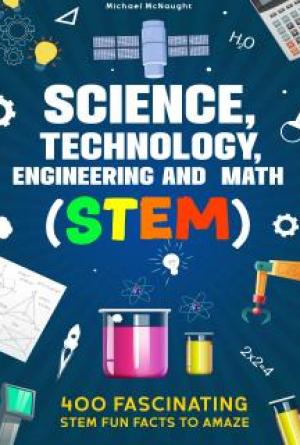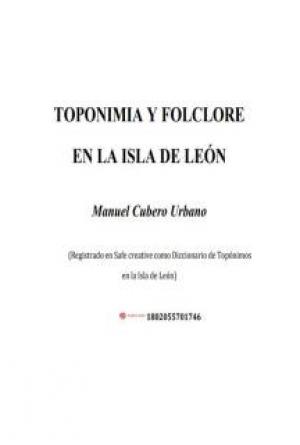Air (kg per kg of fuel) = [( )]100
38 23
Air Supplied from Analysis of Flue Gases
Air in kg per kg of fuel =
N2 × C
33 (CO2+CO)
C is the percentage of carbon in fuel by mass
N
2 is the percentage of nitrogen in flue gas by volume CO
2 is the percentage of carbon dioxide in flue gas by volume CO is the percentage of carbon monoxide in flue gas by volume
Boiler Formulae
Equivalent evaporation =
ms (h1 -h2) 2257 kJ/kg
Factor of evaporation =
(h1 -h2) 2257kJ/kg
m
s (h
1 -h
2 )
Boiler efficiency = m
f x calorificvalueof fuel
where ms = mass flow rate of steam
h1 = enthalpy of steam produced in boiler h2 = enthalpy of feedwater to boiler mf = mass flow rate of fuel
FLUID MECHANICS
Discharge from an Orifice
Let A = cross-sectional area of the orifice = (π/4)d
2
and A
=
cross-sectional area of the jet at the vena conrtacta = (( π /4)
2 d
c
then A = C
cA
A
c
=
›
d
c
ž
2
or C
c =
A œ d Ÿ
where Cc is the coefficient of contraction
At the vena contracta, the volumetric flow rate Q of the fluid is given by
Q = area of the jet at the vena contracta× actual velocity =A
cv
or Q = C
cAC
v 2gh
The coefficients of contraction and velocity are combined to give the coefficient of discharge, C
d
i.e. C
d=C
cC
v
and Q = C
dA2gh
Typically, values for C
d vary between 0.6 and 0.65
Circular orifice: Q = 0.62 A 2gh
Where Q = flow (m
3/s) A = area (m
2) h = head (m)
Rectangular notch: Q = 0.62 (B x H) 2
2gh3
Where B = breadth (m) H = head (m above sill)
Triangular Right Angled Notch: Q = 2.635 H
5/2
Where H = head (m above sill)
Bernoulli’s Theory
H =
h
+
P+ v2 w 2g
H = total head (metres)
h = height above datum level (metres) P = pressure (N/m2 or Pa)
w = force of gravity on 1 m3 of fluid (N) v = velocity of water (metres per second)
Loss of Head in Pipes Due to Friction
Loss of head in metres = fL
v2
d 2g
L = length in metres v = velocity of flow in metres per second d = diameter in metres f = constant value of 0.01 in large pipes to 0.02 in small pipes
Note: This equation is expressed in some textbooks as
Loss = 4fL
v2
d 2g where the f values range from 0.0025 to 0.005
Actual Pipe Dimensions
ELECTRICITY
Ohm's Law
E
I =
R
or E = IR
where I = current (amperes) E = electromotive force (volts) R = resistance (ohms)
Conductor Resistivity
L
R =
a
where ρ = specific resistance (or resistivity) (ohm metres, &·m) L = length (metres)
a = area of cross-section (square metres)
Temperature correction
R
t = R
o (1 + αt)
where R
o = resistance at 0ºC (&)
R
t = resistance at tºC (&)
α = temperature coefficient which has an average value for copper of 0.004 28 (&/&ºC)
R
2
= R
1
(1+αt
2) (1+αt
1)
where R
1 = resistance at t
1 (&) R
2 = resistance at t
2 (&)
α Values &/&ºC
copper 0.00428
platinum 0.00385
nickel 0.00672
tungsten 0.0045 aluminum 0.0040
Dynamo Formulae
Average e.m.f. generated in each conductor = 2
ΦNpZ 60c where Z = total number of armature conductors
c = number of parallel paths through winding between positive and negative brushes where c = 2 (wave winding), c = 2p (lap winding)
Φ = useful flux per pole (webers), entering or leaving the armature p = number of pairs of poles
N = speed (revolutions per minute)
Generator Terminal volts = E
G – I
aR
a
Motor Terminal volts = E
B + I
aR
a
where E = generated e.m.f. E
B = generated back e.m.f. I
a = armature current R
a = armature resistance
Alternating Current
R.M.S. value of sine curve = 0.707 maximum value Mean value of sine curve = 0.637 maximum value Form factor of sinusoidal =
R.M.S. value =
0.707 =1.11
Mean value 0.637
Frequency of alternator = 60
pN cycles per second
Where p = number of pairs of poles N = rotational speed in r/min
Slip of Induction Motor
Slip speedof field-speed of rotor
x 100Speedof field
Inductive Reactance
Reactance of AC circuit (X) = 2πfL ohms
where L = inductance of circuit (henries)
Inductance of an iron cored solenoid =
1.256T2µA henries
L x 108where T = turns on coil
µ = magnetic permeablility of core A = area of core (square centimetres) L = length (centimetres)
Capacitance Reactance
Capacitance reactance of AC circuit =
1 ohms
πfC
where C = capacitance (farads)
Total reactance =
›2πfL -1 ž2πfCŸ ohmsœ
Impedence (Z) = (resistanc
e)2 (reactance)
2
+
= R
2+(2π fL-
1
2πfC)
2 ohms
Current in AC Circuit
Current
=
impressedvolts impedance
Power Factor
p.f. =
truewatts volts x amperes
also p.f. = cos , where Φ is the angle of lag or lead
Three Phase Alternators
Star connected
Line voltage = 3 x phase voltage Line current = phase current
Delta connected
Line voltage = phase voltage Line current = 3 x phase current
Three phase power
P = cos Φ
EL = line voltage IL = line current cos = power factor
ION NAMES AND FORMULAE MONATOMIC POLYATOMIC
Ag+ silver ion BO silver ion BO borate ion
Al3+ aluminum ion C2H3OO acetate ion
Au+ and Au2+ gold ion ClO- hypochlorite ion Be2+ beryllium ion ClO beryllium ion ClO chlorite ion
Ca2+ calcium ion ClO calcium ion ClO chlorate ion
Co2+ and Co3+ cobalt ion ClOClO perchlorate ion
Cr2+ and Cr3+ chromium ion CN- cyanide ion
Cu+ and Cu2+ copper ion CO copper ion CO carbonate ion
Fe2+ and Fe3+ iron ion C2OO oxalate ion
K+ potassium ion CrO potassium ion CrO chromate ion
Li+ lithium ion Cr2OO dichromate ion
Mg2+ magnesium ion HCO magnesium ion HCO hydrogen carbonate or bicarbonate ion Na+ sodium ion H3O+ hydronium ion Zn2+ zinc ion HPO zinc ion HPO hydrogen phosphate ion
H2POPO dihydrogen phosphate ion HSOHSO hydrogen sulphite or bisulphite ion HSOHSO hydrogen sulphate or bisulphate ion MnOMnO permanganate ion NN azide ion
NH4+ ammonium ion NONO nitrite ion
NONO nitrate ion
OO peroxide ion
OCN- cyanate ion
OH- hydroxide ion POPO phosphite ion
POPO phosphate ion
SCN- thiocyanate ion SOSO sulphite ion
SOSO sulphate ion
S2OO thiosulphate ion
 This material is owned by Power Engineering Training Systems and may not be modified from its original form. Duplication of this material for student use in-class or for examination purposes is permitted without written approval.
This material is owned by Power Engineering Training Systems and may not be modified from its original form. Duplication of this material for student use in-class or for examination purposes is permitted without written approval.
 Address all inquiries to:
Address all inquiries to: Power Engineering Training Systems
1301 – 16 Ave. NW, Calgary, AB Canada T2M 0L4
1-866-256-8193
Printed in Canada on Recycled Paper









